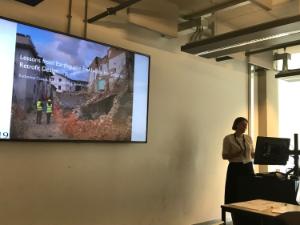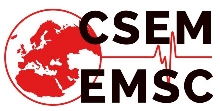News & Events
SECED 2019 - EEFIT Session - Lessons from earthquake fieldwork

The Earthquake Engineering Field Investigation Team (EEFIT) is a non-profit organisation, sponsored by the UK’s Institution of Structural Engineers. Since its formation in 1982, EEFIT has conducted 37 field investigations following major earthquakes in order to capture geological and seismological data, lessons learned for the design of infrastructure and emergency management procedures, and the socio-economic impacts of earthquakes. One key objective of the field investigations is to assess the effectiveness of seismic retrofit measures, and to compare actual performance with designer expectations. Seismic retrofit design involves weighing trade-offs between the benefit of intervention versus cost and level of disruption involved. Post-earthquake fieldwork provides evidence to demonstrate which intervention methods are suitable and provide benefits in terms of improved performance. This evidence is particularly important for regions with a high levels of vulnerable, non-seismically designed building stock, and for retrofit design for critical facilities such as schools and hospitals. It also can inform decisions for reducing seismic risk for historic buildings and sites, where cultural heritage value can be compromised by excessive intervention. Past EEFIT mission reports and related journal papers, covering multiple events in different contexts and geographies, were reviewed to identify fieldwork observations relevant for the design of seismic retrofit. Field observations confirmed the effectiveness of common methods for retrofitting unreinforced masonry (URM) and adobe buildings such as improved diaphragms, tying walls to floors and certain wall strengthening methods (events including Amatrice, 2016; Nepal, 2015; Christchurch, 2011; Chile, 2010; L’Aquila, 2009; Central Coast Peru, 2007; Umbria, 1997; Northridge, 1994; Augusta, Sicily, 1990). Observations also showed the importance of considering material compatibility and avoiding unnecessary mass when selecting intervention methods. For example, URM buildings with weak masonry where timber roofs were replaced with heavy, stiff reinforced concrete slabs and ring beams performed poorly (Amatrice, 2016; Umbria, 1997). Masonry and adobe wall strengthening solutions with incompatible materials and/or without adequate tying details through walls also were observed to perform poorly (Amatrice, 2016; Chile, 2010). In other cases, observed performance highlighted the importance of considering how adjacent structures interact; for example, in the Kumamoto, Japan event in 2016, individual retrofitted schools performed well but link bridges connecting the buildings sustained serious damage. As expected, for certain events significant variation in the level of ground shaking was observed across a region and seismic demand sometimes exceeded expected design demands (for example in Amatrice, 2016 and Christchurch, 2011). In such cases, higher levels of ground shaking were associated with higher levels of damage and collapse in retrofitted structures. Overall, the review concluded that structures that had been retrofitting using best practice approaches performed better. Observations also demonstrated that the performance of retrofitted structures, which are often designed for a reduced level of demand, can be sensitive to the level of ground motion they are subjected to. To improve knowledge in this area, the talk ends with recommendations for collecting and sharing post-event fieldwork data.
Last modified: Tue, 08 Oct 2019 14:17:56 BST




